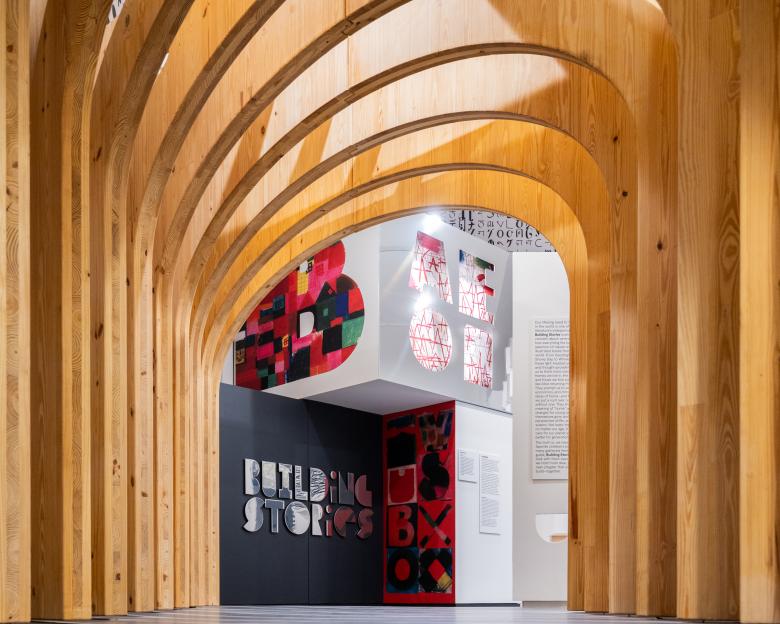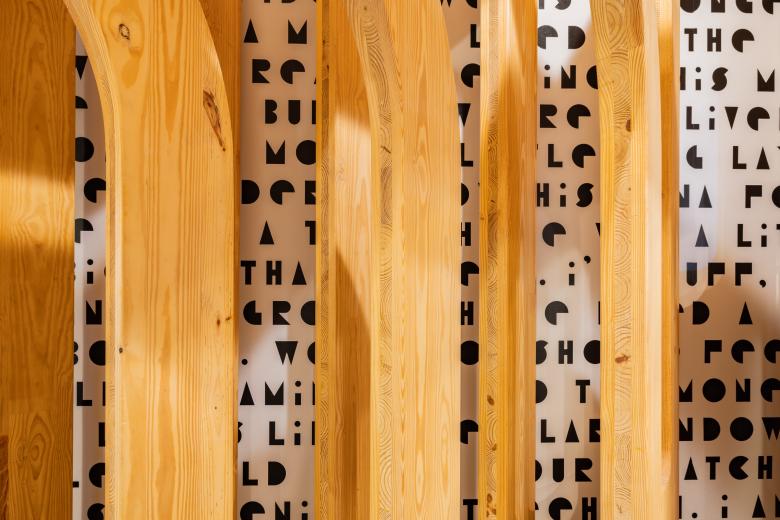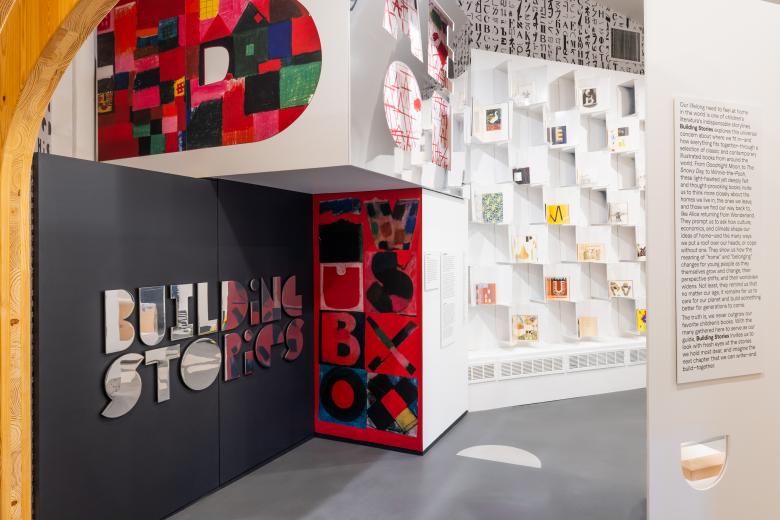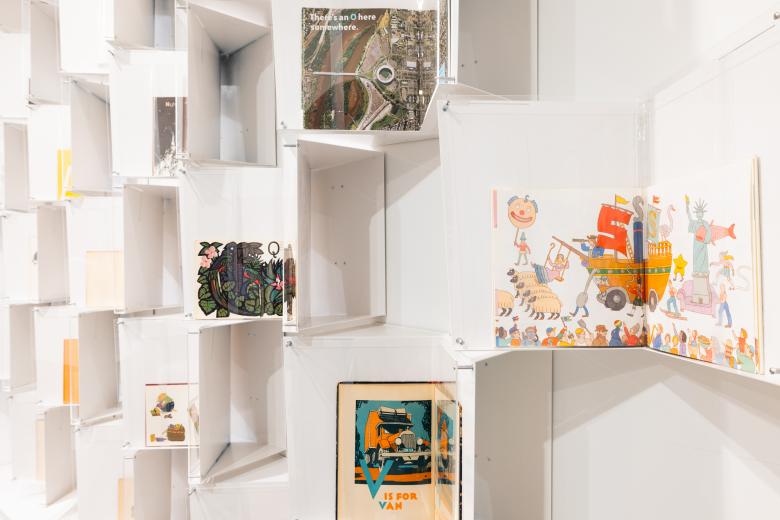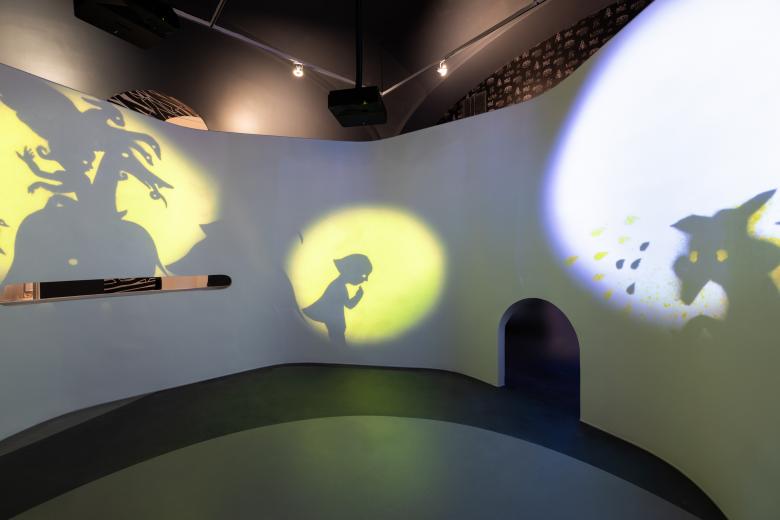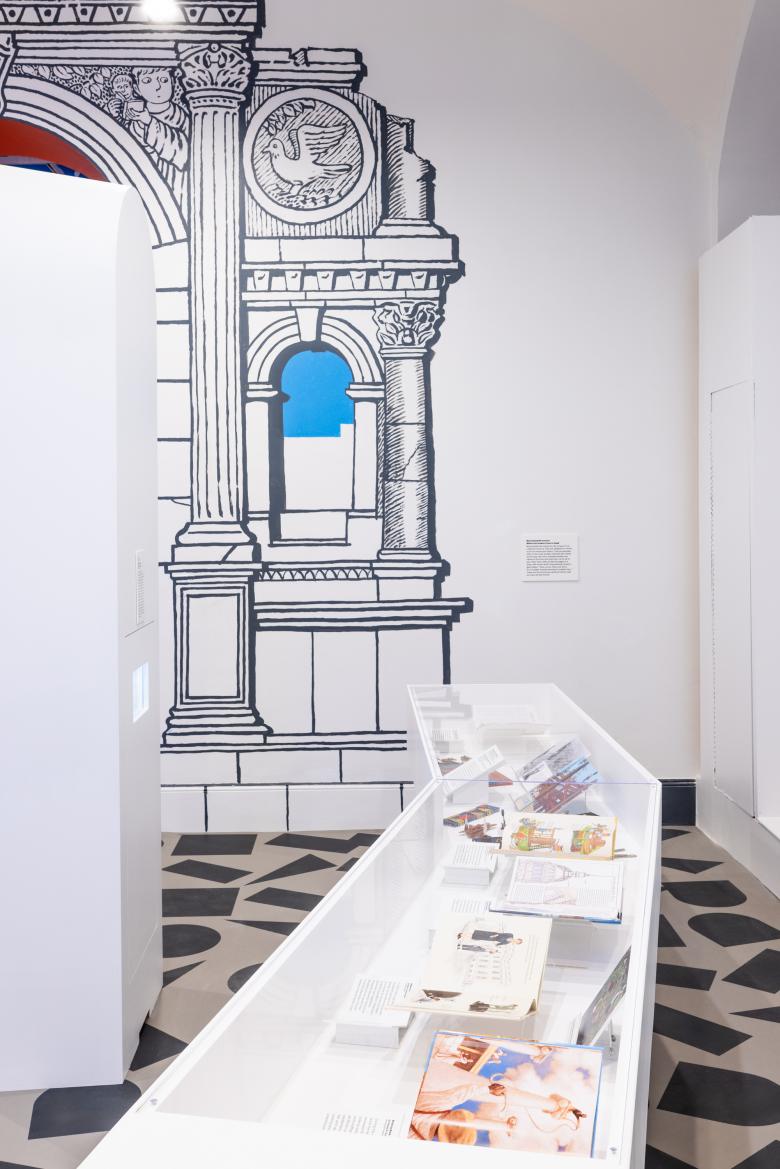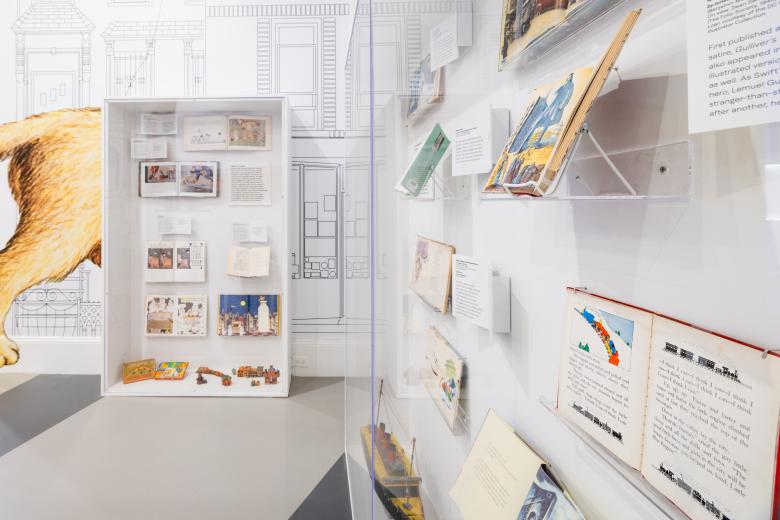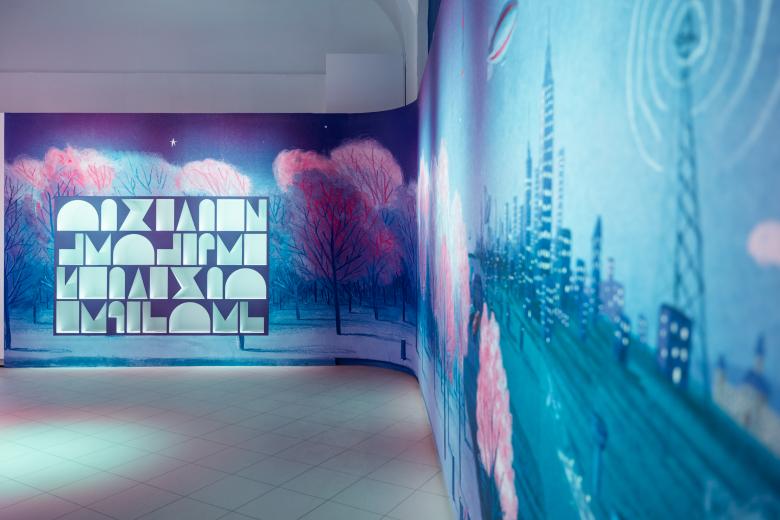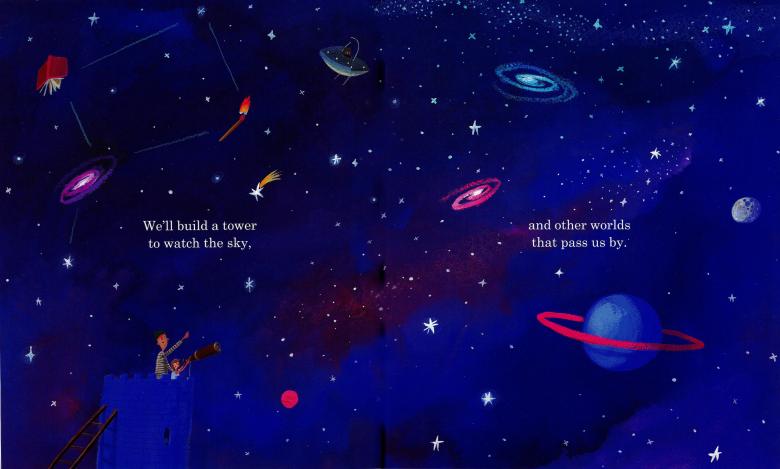23. January 2024
Photo: Elman Studio; all images courtesy of National Building Museum
The National Building Museum in Washington, DC, opened Building Stories on January 21. Six years in the making, the ambitious multigenerational exhibition curated by Leonard Marcus, an expert on children's literature, will be on display for ten years.
Back in 2009, Urban Center Books, the now-defunct bookstore of the Municipal Art Society in New York City, hosted the exhibition Unpacking My Library, featuring displays of book lists compiled by notable architects, including Peter Eisenman, Steven Holl, Michael Sorkin, Bernard Tschumi, and Tod Williams and Billie Tsien. The top-ten lists featured books that inspired the architects across their lives, so many of them tended to be dense books of architectural theory, philosophy, urbanism, and the like. But Billie Tsien, refreshingly, included a children's book: Harold and the Purple Crayon, the 1955 picture book by Crockett Johnson that follows a young boy, Harold, as he goes on a nighttime adventure enabled by the purple crayon he wields. The inclusion of that book led me, a new father at the time, to get the book and start reading it to my daughter. The simple premise and imaginative storytelling express to kids how the world around them is made up of objects but also how they can imagine and create those objects and, in turn, shape the world around them. Logically, given its premise, Harold and the Purple Crayon is one of the 150 books included in Building Stories at the National Building Museum. Below is a short visual tour through Building Stories — an exhibition meant to be enjoyed by children and parents and other grown-ups alike.
Approached from the museum's large atrium, visitors enter the exhibition through a portal with cross-laminated timber arches, as seen at top. Portland, Oregon's Plus And Greater Than, the exhibition's designer, layered the arches in front of wall graphics with the stylized font used for the exhibition title. (Photo: Elman Studio)
The exhibition is organized into four galleries, starting with “Building Readers,” which “explores a child’s first experiences of shapes, forms, imagery, and words” and “shows how the presentation of a story can be influenced by aspects of a book’s physical design and construction,” per a statement from the museum. (Photo: Elman Studio)
Children's books, preparatory artworks, and architectural models are displayed across a serrated wall in the “Building Readers” gallery. (Photo: Elman Studio)
In the second gallery, “Your Home, My Home,” visitors find an immersive round theater that uses light and sound to display such books as Tar Beach, Shadow, and The Snowy Day. The gallery also includes the first of three reading nooks, where kids can read or listen to selected books. (Photo: Elman Studio)
The third gallery, “Scale Play,” is accessed by a “magic portal” that is meant to induce the feeling of changing size. It features features a special wall illustration by author/illustrator David Macaulay from Roman Antics, his 1997 book that gives a bird's-eye tour of Roman architecture. (Photo: Elman Studio)
Once inside the “Scale Play” gallery, visitors can interact with objects, such as models and binoculars, that impact how space is perceived and relate to the way scale is often played with in children's literature. (Photo: Elman Studio)
The fourth gallery, “Wider World,” brings the various concepts and themes of the exhibition together to ask: How can we build a better world, together? Blocks are provided for children to make their own stories and collaborate with others, while the largest of the three reading nooks offers books on architecture and construction. (Photo: Elman Studio)
The landscape imagery wrapping the “Wider World” gallery is drawn from the books of author/illustrator Oliver Jeffers. (Illustration from What We’ll Build: Plans For Our Together Future by Oliver Jeffers, courtesy of Philomel Books)
Related articles
-
MASS Design Group at NBM
on 3/31/21
-
HOT TO COLD
on 1/22/15
